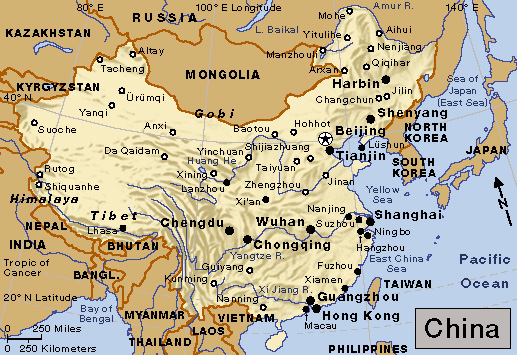Jilin << jee lihn >> Province is a province in northeastern China. Its name is sometimes spelled Kirin. The province has an area of 72,200 square miles (187,000 square kilometers). Jilin is one of China’s least populous provinces. Changchun is the province’s capital and largest city. Jilin is part of a region of China called the Northeast, or Dongbei. The area was historically known as Manchuria.

Jilin borders Russia in the east and North Korea in the southeast. The Tumen and Yalu rivers form part of Jilin’s border with North Korea. The Songhua River flows through the province. Jilin has plains in the west, hills in the center, and mountains in the east. The Songhua Reservoir lies south of the city of Jilin. The Changbaishan Nature Reserve, near the North Korean border, is one of China’s largest nature reserves.
Jilin’s mineral deposits include coal, iron, oil shale, and petroleum. Leading agricultural products include corn, millet, sorghum, soybeans, sugar beets, and tobacco. Jilin accounts for much of the world’s ginseng production. Farmers also raise cattle, hogs, and sheep. Major industries in the province manufacture chemicals, food products, forest products, motor vehicles, and pharmaceuticals.
For centuries, various tribes lived in Jilin. A leader of a tribal people called the Ruzhen (also known as the Jurchen), founded the Jin dynasty (1115-1234). A dynasty is a series of rulers from the same family. Beginning in the late 1500’s, separate Ruzhen tribes united and began to ally with some other neighboring groups. In the early 1600’s, they took the name Manchu. The Manchus conquered China, seizing Beijing in 1644. They established the Qing dynasty (1644-1912).
In 1931, the Japanese seized Jilin and the rest of Manchuria. In early 1932, they made it a puppet state called Manchukuo. Japan made Changchun, then called Xinjing, the capital of Manchukuo. The Soviet Union declared war on Japan at the end of World War II (1939-1945). The Soviets occupied Manchuria and returned it to China in 1946.
